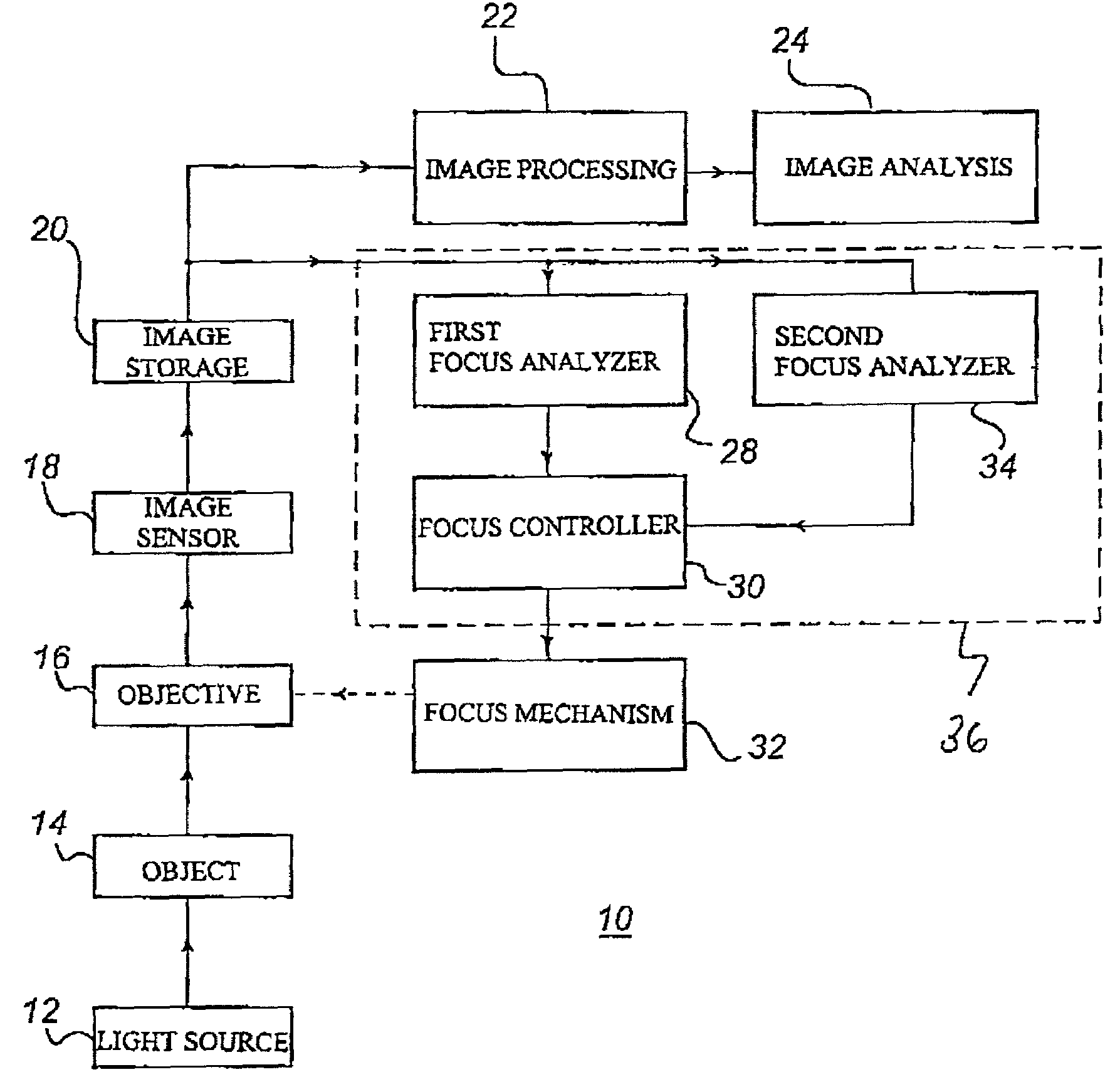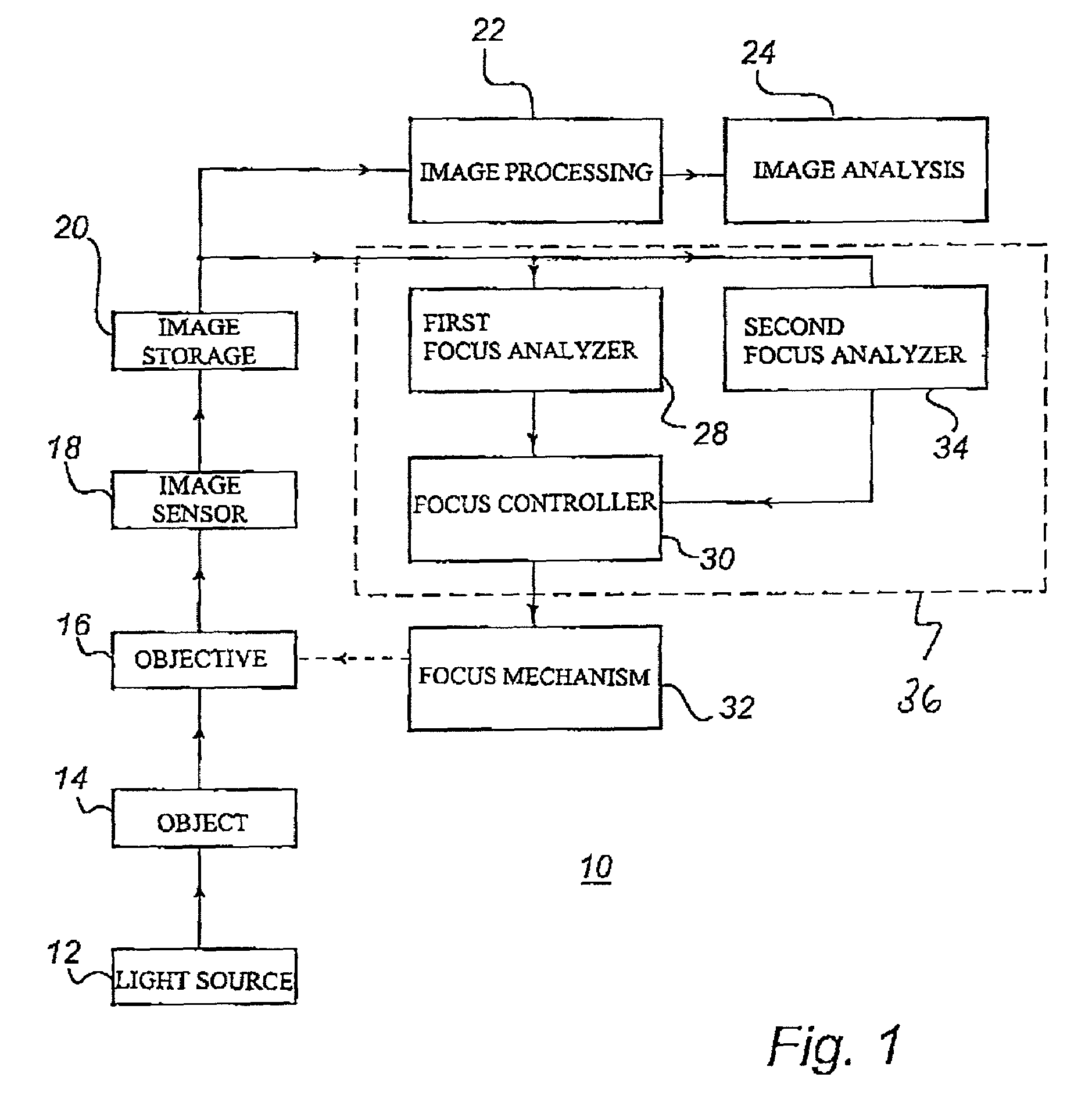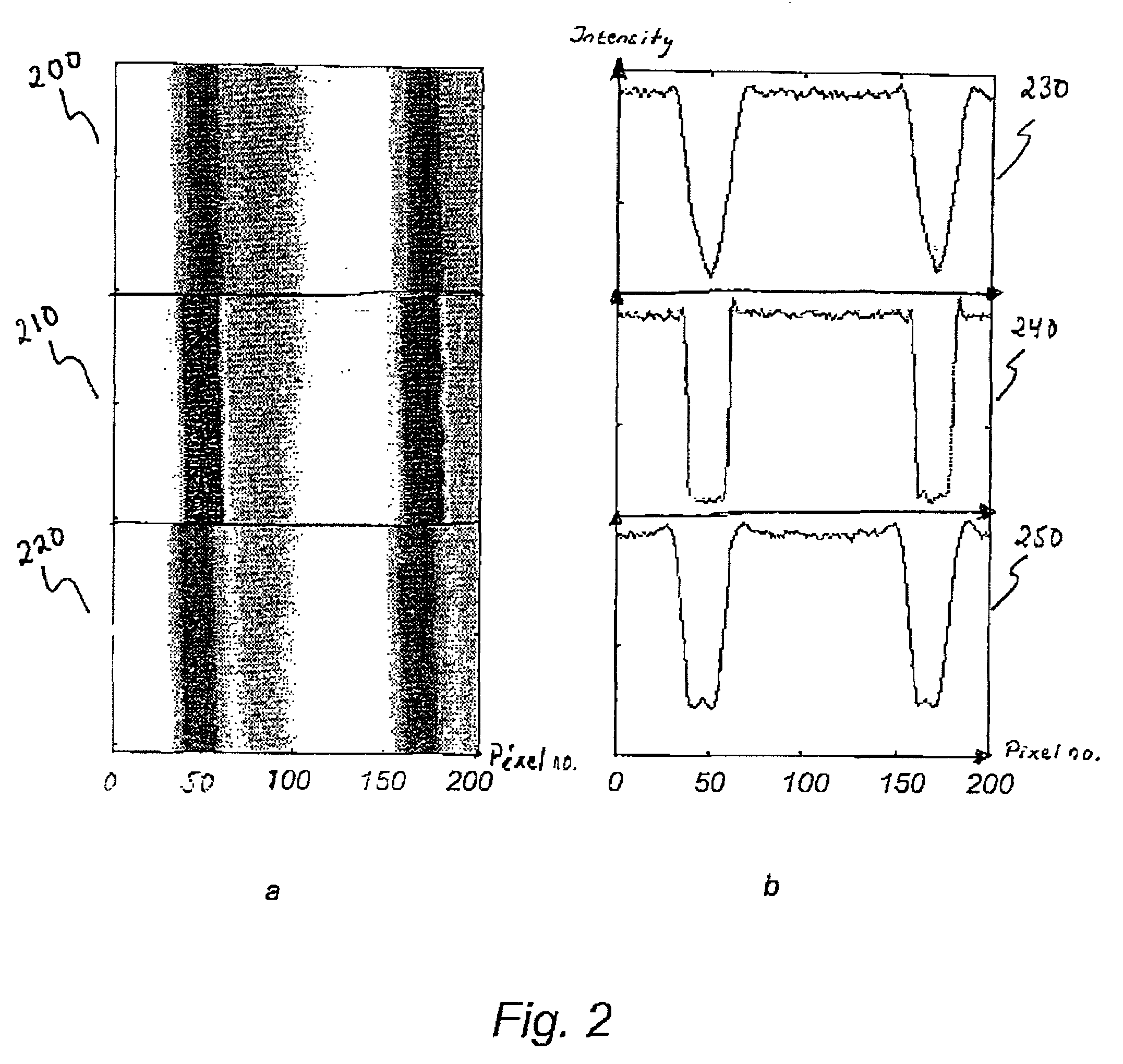Automatic focusing
a technology of automatic focusing and focusing chamber, which is applied in the field of automatic focusing, can solve the problems of increasing system complexity, increasing system complexity, and increasing system costs and space requirements, and non-ideal components in the optical beam path
- Summary
- Abstract
- Description
- Claims
- Application Information
AI Technical Summary
Benefits of technology
Problems solved by technology
Method used
Image
Examples
Embodiment Construction
[0073]FIG. 1 is a schematic view of an optical system in the form of an automatically focusing microscope system 10. The microscope system 10 has a light source 12, which illuminates an object 14 which is to be studied in the microscope. The object 14 can be, for instance, a blood smear on a slide, in which one wants to study white blood cells, and in which red blood cells are used as a basis for automatic focusing.
[0074]The microscope system 10 further comprises an objective 16, which is adapted to reproduce by means of the light from the light source 12, that part of the object 14 which is within the field of view of the objective on a digital image sensor 18, which produces an image in electronic form. The image produced by the image sensor 18 is stored in an image storage 20. An image-processing unit 22 and an image-analyzing unit 24 are connected to the image storage 20. These units are intended for processing of the useful images from the image sensor 18. An example of process...
PUM
 Login to View More
Login to View More Abstract
Description
Claims
Application Information
 Login to View More
Login to View More - R&D
- Intellectual Property
- Life Sciences
- Materials
- Tech Scout
- Unparalleled Data Quality
- Higher Quality Content
- 60% Fewer Hallucinations
Browse by: Latest US Patents, China's latest patents, Technical Efficacy Thesaurus, Application Domain, Technology Topic, Popular Technical Reports.
© 2025 PatSnap. All rights reserved.Legal|Privacy policy|Modern Slavery Act Transparency Statement|Sitemap|About US| Contact US: help@patsnap.com



